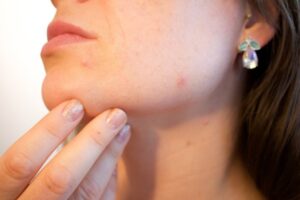Are you worried about your child’s dental health?
Children often face common dental problems that can affect their smiles and overall well-being. The good news is most of these common dental issues are preventable with the right care and habits.
In this article, you’ll discover practical tips to protect your child’s teeth. Healthy smiles begin early, and small steps today can lead to a lifetime of strong, healthy teeth.

Table of Contents
Common Dental Issues in Children
Dental problems in children can lead to pain, missed school days, and poor overall health. Knowing the most common issues and how to prevent them will help keep your child’s teeth healthy and strong.
Tooth Decay (Cavities)
Tooth decay is a common dental issue in children. It occurs when bacteria in the mouth produce acids that damage the enamel. The decay can cause pain, sensitivity, and visible holes in the teeth.
Poor oral hygiene and a high-sugar diet are the main causes of cavities. Children with untreated tooth decay may experience difficulty eating or speaking. If left untreated, it can lead to infection or early tooth loss.
Tooth Sensitivity
Tooth sensitivity in children can cause pain or discomfort when eating hot, cold, or sweet foods. It is often due to enamel erosion or gum recession. Some children may also experience sensitivity after dental treatment.
The main causes of tooth sensitivity include cavities, worn enamel, or cracked teeth. Acidic foods and aggressive brushing may worsen the condition. It can affect a child’s ability to enjoy certain foods and may lead to dental anxiety.
Thumb Sucking
Thumb sucking is a natural reflex in infants and young children. Prolonged thumb sucking can affect the alignment of teeth and the shape of the jaw. This habit may cause front teeth to push outward over time.
It can also lead to speech problems and difficulty chewing. The severity of the effects depends on how frequently and intensely the child sucks their thumb. Thumb sucking is most problematic after permanent teeth start to grow.
Teeth Grinding (Bruxism)
Teeth grinding, also known as bruxism, is a condition where children grind or clench their teeth. It usually happens during sleep and may go unnoticed. Some children experience jaw pain or headaches as a result.
Stress, misaligned teeth, and medical conditions can cause bruxism. Over time, it can wear down tooth enamel and cause cracks. Severe cases may require dental intervention to prevent long-term damage.
Gum Disease (Gingivitis)
Gum disease in children begins with gingivitis, the earliest stage of the condition. It causes red, swollen gums that may bleed during brushing or flossing. If left untreated, it can develop into more severe forms of gum disease.
Poor oral hygiene and plaque buildup are common causes of gingivitis. Some children are more prone due to genetic factors or certain health conditions. The condition can lead to bad breath and discomfort while eating.
Dental Trauma (Chipped or Knocked-Out Teeth)
Children are prone to dental trauma due to their active lifestyles. Chipped or knocked-out teeth are common injuries during sports or play. Trauma can cause pain, bleeding, and difficulty eating or speaking.
Accidents, falls, or physical contact are the usual causes. Damage can affect both primary and permanent teeth. Depending on the severity, dental trauma may require immediate treatment.
Orthodontic Problems (Misaligned Teeth or Jaw)
Orthodontic problems in children include crooked teeth, overbites, and underbites. These issues can affect both appearance and oral health. Some children may have difficulty biting or chewing properly.
Genetic factors, thumb sucking, and early tooth loss can cause misalignment. In some cases, crowded teeth can lead to difficulty cleaning and higher cavity risk. Severe cases may require braces or other treatments.
Mouth Sores (Canker Sores, Cold Sores)
Mouth sores are common in children and can cause discomfort. Canker sores are small ulcers inside the mouth, while cold sores appear outside on the lips. Both conditions can be painful and affect eating or speaking.
Infections, minor injuries, and stress are common causes. Cold sores are caused by the herpes simplex virus. Most mouth sores heal on their own, but severe cases may require medical attention.
Early Tooth Loss
Early tooth loss occurs when children lose baby teeth before the expected time. It can result from decay, trauma, or gum disease. Early loss can lead to problems with speech and tooth alignment.
When a baby’s tooth is lost too early, neighboring teeth may shift into empty space. This can affect how permanent teeth grow. Speech development and chewing may also be affected.
Stained Teeth
Stained teeth in children can be caused by external or internal factors. External stains result from foods, drinks, or poor oral hygiene. Internal stains can occur from certain medications or health conditions.
Stained teeth may appear yellow, brown, or gray. Children with stained teeth may feel self-conscious about their appearance. The condition can also indicate underlying dental issues that need attention.
Prevention Strategies for These Dental Issues
Maintaining good oral health is essential for children’s overall well-being. Understanding and addressing common dental issues early can prevent long-term complications and promote healthy smiles.
Establishing Good Oral Hygiene Habits
Teaching children proper oral hygiene is essential for preventing dental problems. Daily brushing and flossing help remove plaque and food particles. This reduces the risk of cavities, gum disease, and other oral health issues.
Children should brush their teeth twice a day with fluoride toothpaste. Flossing should begin as soon as two teeth touch. Supervision ensures they develop effective brushing and flossing habits.
Regular Dental Check-Ups
Routine dental visits allow for early detection of dental problems. Dentists can identify issues like cavities, misaligned teeth, and gum disease before they worsen. Professional cleanings also help maintain oral health.
Children should visit the dentist every six months. These visits build familiarity and reduce dental anxiety. Regular check-ups ensure proper dental development and prevent long-term complications.
Dietary Choices
A healthy diet plays a crucial role in preventing dental problems. Reducing sugary foods and drinks minimizes the risk of tooth decay. Foods rich in calcium and vitamins promote strong teeth and healthy gums.
Encouraging children to drink water instead of sugary beverages helps protect enamel. Snacks like fruits, vegetables, and cheese support oral health. Limiting sticky and acidic foods further reduces the risk of cavities.
Fluoride Use
Fluoride strengthens tooth enamel and makes it more resistant to decay. It can be found in toothpaste, mouth rinses, and drinking water. Using fluoride products helps reduce the risk of cavities in children.
Fluoride treatments at the dentist provide extra protection. Parents should monitor fluoride use to prevent overexposure. This ensures children receive the right amount for healthy teeth.
Sealants as a Preventive Measure
Dental sealants protect the chewing surfaces of back teeth from decay. They create a barrier that prevents food and bacteria from getting stuck in deep grooves. Sealants are especially useful for molars, which are prone to cavities.
Applying sealants is a quick and painless procedure. Dentists often recommend them for children as soon as their permanent molars erupt. Sealants can significantly reduce the risk of tooth decay over time.
Role of Parents and Caregivers
Parents and caregivers play a vital role in promoting children’s oral health. Their guidance and support help establish healthy habits that prevent dental problems and encourage lifelong care.
Encouraging Healthy Habits at Home
Parents and caregivers are responsible for establishing healthy dental routines at home. Teaching children to brush their teeth twice a day with fluoride toothpaste is a key step. Encouraging flossing and proper rinsing also ensure a thorough cleaning of the mouth.
Providing a balanced diet with limited sugary snacks helps prevent tooth decay. Consistency in maintaining these habits forms the foundation for good oral health in children.
Monitoring Children’s Oral Health
Parents should regularly check their children’s teeth and gums for any signs of problems. Issues like discoloration, sensitivity, or bleeding gums should be addressed promptly. Early detection of these issues can prevent more serious dental conditions.
Enrolling in a kids’ dental plan ensures access to regular checkups and professional care. These plans can help parents manage costs while keeping their child’s oral health on track.
Educating Children about Dental Care
Caregivers should teach children the importance of dental hygiene from an early age. Explaining the purpose of brushing and flossing helps children understand why it matters. Using simple, age-appropriate language ensures they can grasp the concepts easily.
Providing visual aids, books, or videos can make learning about dental care engaging. Educating children empowers them to take responsibility for their oral health over time.
Healthy Teeth Happy Kids
Your child’s common dental issues play a key role in their overall well-being. Simple daily habits, like brushing and flossing, make a big difference. Teaching your child to care for their teeth now sets them up for a future of healthy smiles.
Don’t forget that regular dental checkups are just as important as at-home care. Work with your dentist to ensure your child’s teeth stay strong and healthy.
Did you find the information in this article helpful? If so, be sure to check out our blog for more valuable resources.




